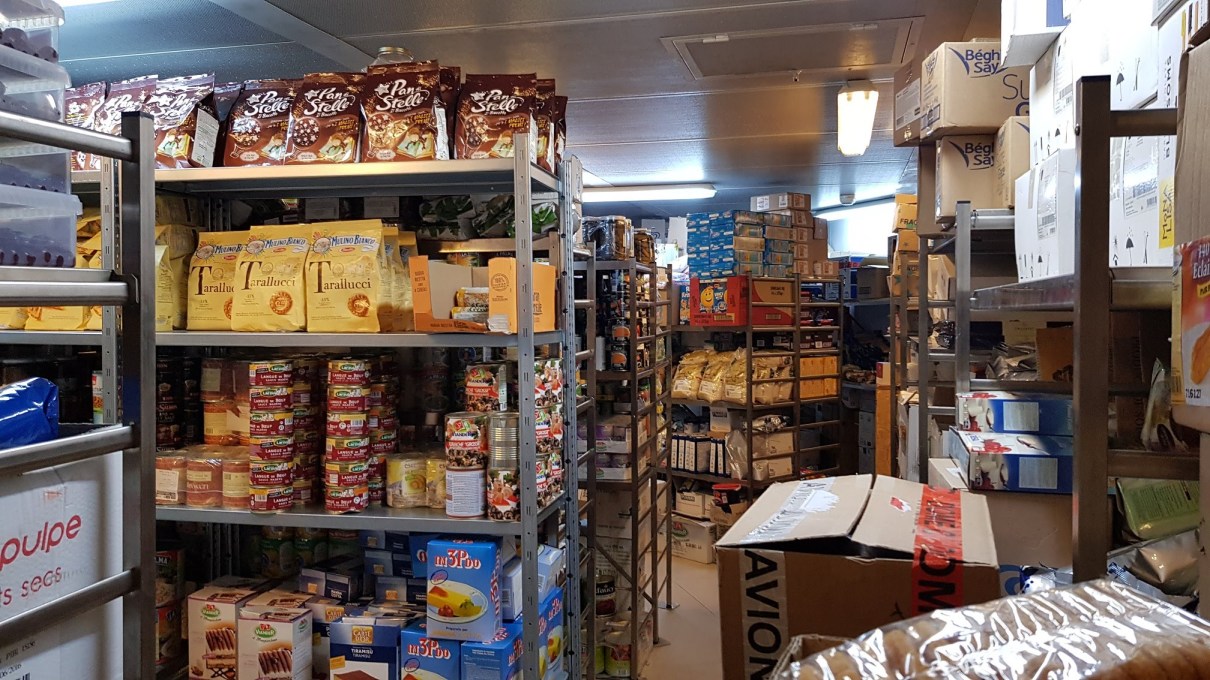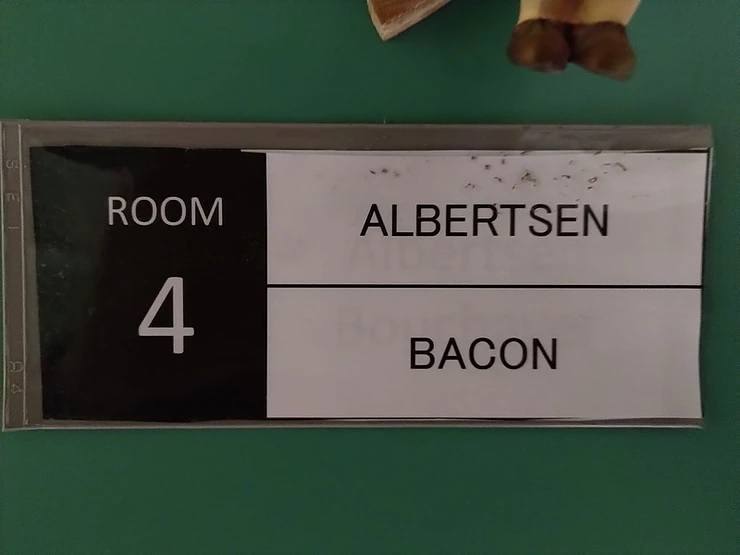Dr. Nadja Albertsen is the ESA-sponsored medical doctor spending 12 months at Concordia research station in Antarctica. She facilitates a number of experiments on the effects of isolation, light deprivation, and extreme temperatures on the human body and mind. In the following post, Nadja walks us through a day in the life of Concordia.

The supermarket – here you can find hidden treasures again and again, with a lot of luck only expired a few years ago (but everything still edible). Credits: ESA/IPEV/PNRA–C. Possnig
Boxes of tea and 5-liter buckets of mustard stacked from floor to ceiling in several rows threaten to topple over. Flasks of tabasco and soy sauce standing close to the edge of the shelf tilt dangerously when I move things around. I am in the process of making inventory lists for the food stock.
My immediate joy in being able to make lists (I love to make lists) has gradually been replaced by equal parts amazement, amusement and frustration. There are huge amounts of food. 1220 boxes of tea. 230 litres of concentrated pear juice. 39 litres of balsamic vinegar. 83 kg of mustard. I dare not share the amount of salt biscuits, butter and cream in case the National Board of Health reads this.
Oh, there’s also tons of bacon.
In addition to a sizeable freezer compartment, Concordia has a large pantry and a similar-sized room for food that must be stored at +4°C which is what our refrigerator runs at. In addition, there is an emergency storage in the summer camp (where we stay in the event the base must be evacuated, for example because of fire), and five (!) containers of food. The risk that we will starve is almost non-existent.
In counting the food I notice the expiration dates, which are not strictly followed at Concordia as most of us are accustomed to. We eat most “expired” things, especially dry goods, as long as there are no signs that the packaging has been opened or that it has gone off.
I throw out a suspicious packet of chamomile that expired in 1999 (Concordia was built in 2005) and some bottles of soy sauce that at some point leaked and formed its own spores.
But even food waste can be re-purposed here. The cartons of expired goods make for great pitch markers in the snow for our volleyball players.
To read Nadja’s adventures at Concordia in Danish, see her personal blog.





Discussion: no comments